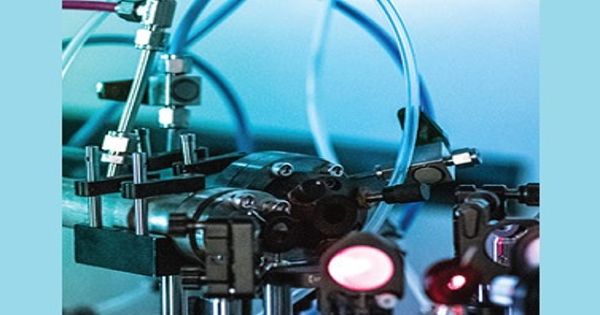A laser-based sensor developed by Scientists that can monitor benzene emissions
A KAUST laser sensor could enhance the monitoring and limiting of exposure to benzene emissions. KAUST researchers have worked together with Saudi Aramco to develop a system that accurately perceives extremely low benzene concentrations in real-time. A functional benzene sensor will soon be the world’s first in terms of risks and tight controls, in particular for the petrochemical industry.
A laser-based sensor developed at KAUST could improve the monitoring of benzene emissions and limit exposure to this pollutant. Typical methods for controlled emissions of benzene are based on gas chromatography and mass spectrometry but involve strict maintenance schedules and complex sampling protocols.
The natural occurrence and the anthropogenic chemical of benzene (C6H6) are normal and is linked to a number of acute and long-term adverse health effects, including cancer and aplastic anemia. This hazardous volatile compound, which comes from human and natural sources, occurs primarily in manufacturing environments ranging from crude oil and petrochemical production plants to service stations and endangers the health of employees. The use of petroleum goods, including engine gasoline, paints, and solvents, will result in an emission of benzene on both jobs and domestically. It is also found in exhaust systems, biomass-based heating fuels, and some consumer goods that can lead to unsafe exposure. Moisture is used in the processing of styrene polymers for weighing liquid benzene.
Typical methods for controlled emissions of benzene are based on gas chromatography and mass spectrometry but involve strict maintenance schedules and complex sampling protocols. Due to the clear effects of benzene on human health, efforts to minimize staff, and the general population’s exposure to benzene are required. Trade-based sensors present contamination concerns from other air materials, with detection limits of more than 100 parts per billion without reaching the thresholds recommended.
Typical methods of controlled benzene emissions are based on gas chromatography and mass spectrometry but require stringent maintenance plans and complex procedures of sampling. Because of the strong health effects of benzene, efforts are needed to reduce workers ‘ exposure to benzene by the general public. Contamination issues from other air materials are present in industrial sensors, with detection rates exceeding 100 parts per billion without meeting the recommended thresholds.
The researchers constructed a wall sensor consisting of two parallel concave mirrors face to face, to create a cavity around the specimen, in order to achieve this unparalleled sensitiveness. The cavity traps the laser beam, which continues between the mirrors. “Its distance through the sample is thus considerably higher than the separation between mirrors,” states Ph.D. student Mhanna Mhanna, who carried out the experiments. “There are three orders of magnitude less than in a conventional sensor so that we can detect concentrations,” he says.
By choosing a laser wavelength the Farooq team has improved benzene light absorption and mathematically removed all interferences with methane, ethylene, and water vapor. In the presence of intervening elements, this produced specific benzene concentration. A reactor with chlorinated compounds joins dry benzene. If the upstream dryers are not working properly, benzene humidity facilitates the production of hydrochloric acid, which induces reactor and process tract acid corrosion.
In true samples taken from different sites, the sensor found trace benzene. In parking garages, for example, the sensor has observed greater quantities of benzene in compliance with traffic patterns on weekdays than at weekends. The maximum amount was shown by service stations, but the volumes are far below the recommended limits.
It is a threat to workers’ health particularly in the petrochemical sector: benzene. It is one of the harmful substances. Responsive issues can occur when the compound has been extremely toxic and volatile. “To scan target areas for benzene emissions the sensor can either be attached to a drone or taken by Hand says Mhanna. The team is also looking to boost the portability of the sensor.















